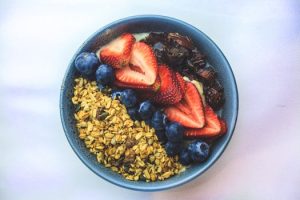Cooking with Seasonal Vegetables for Every Month
Cooking with seasonal vegetables is a great way to incorporate fresh and nutritious produce into your meals all year round. Not only do seasonal vegetables offer a variety of flavors and textures, but they are also more environmentally friendly and budget-friendly. By choosing to cook with seasonal vegetables, you are not only supporting local farmers, but also reducing the carbon footprint of transportation and storage of out-of-season produce. In this article, we will go through a list of seasonal vegetables for each month and how you can use them to create delicious and healthy dishes.
January
The start of the new year is a great time to get back on track with healthier eating habits. In January, you’ll find a variety of winter vegetables that are packed with vitamins and minerals to boost your immune system. These include butternut squash, cabbage, brussels sprouts, and kale.
Butternut Squash
Butternut squash is a versatile vegetable that can be roasted, pureed, or used in soups and stews. It is a good source of vitamin A, C, and E, as well as fiber and potassium. One of the easiest recipes for butternut squash is to simply roast it with olive oil, salt, and pepper. You can also use it as a substitute for pumpkin in pies and desserts.
Cabbage
Cabbage is a cruciferous vegetable that is loaded with antioxidants and anti-inflammatory properties. It is also low in calories and high in fiber, making it a great addition to any weight-loss diet. In January, you can make delicious dishes with cabbage, such as coleslaw, stir-fries, and even stuffed cabbage rolls. A simple recipe for stuffed cabbage rolls is to mix ground beef, rice, and seasonings together, roll it up in cabbage leaves, and bake in the oven with tomato sauce.
February
As winter moves towards spring, February offers a variety of root vegetables and leafy greens. These include beets, carrots, turnips, and spinach.
Beets
Beets are a rich source of antioxidants, folate, and iron. They have a slightly sweet flavor and can be used in both sweet and savory dishes. One of the easiest ways to enjoy beets is to roast them with honey, olive oil, and balsamic vinegar. You can also add them to salads, make beet chips, or use them in smoothies for a vibrant color and added nutrients.
Spinach
Spinach is a leafy green that is available year-round, but it is at its prime in February. It is a good source of iron, calcium, and vitamins A and C. Spinach can be used in a variety of dishes, such as salads, soups, and pastas. To make a simple yet healthy spinach salad, toss together spinach, avocado, cherry tomatoes, and your favorite dressing.
March
March marks the beginning of spring and the arrival of green vegetables. Some of the common ones you’ll find in March are asparagus, peas, and artichokes.
Asparagus
Asparagus is a nutrient-dense vegetable that is low in calories and high in fiber. It is also a good source of folate and vitamins C, E, and K. One of the easiest ways to cook asparagus is to blanch it and then add it to salads or pasta dishes. You can also roast it in the oven with some olive oil, salt, and pepper for a delicious side dish.
Artichokes
Artichokes are a great source of fiber, vitamin C, and antioxidants. They have a unique flavor that pairs well with Mediterranean-inspired dishes. To make a simple and flavorful artichoke dish, you can steam them and then top with a mixture of breadcrumbs, garlic, and parmesan cheese before baking in the oven.
April
With the arrival of spring, April brings a variety of colorful and flavorful vegetables, including radishes, chives, and spring onions.
Radishes
Radishes are a root vegetable that is often overlooked but offers a variety of health benefits. They are loaded with vitamin C and antioxidants, making them great for boosting the immune system. In April, you can use radishes in salads, soups, or even roast them as a side dish. A simple recipe for roasted radishes is to toss them with olive oil, garlic, and thyme before placing them in the oven.
Spring Onions
Spring onions, also known as scallions, are a versatile ingredient that can add a pop of freshness and flavor to your meals. They are a good source of vitamin C, K, and folate. In April, you can use them in stir-fries, omelets, or even grill them as a side dish.
May
May brings a variety of vegetables, including zucchini, cucumbers, and green beans.
Zucchini
Zucchini is a popular summer squash that is low in calories and high in vitamins and minerals. It is a great replacement for pasta in dishes such as zucchini noodles or even as a substitute for pizza crust. Zucchini can also be roasted, grilled, or added to salads for a refreshing and nutritious meal.
Cucumbers
Cucumbers are a hydrating vegetable that is high in vitamin K and low in calories. They are great for adding to salads, making pickles, or simply enjoying as a snack with some dip. To make a refreshing cucumber salad, slice cucumbers, mint, and feta cheese, and toss with lemon juice and olive oil.
June
As summer approaches, June offers a variety of seasonal vegetables, such as tomatoes, peppers, and corn.
Tomatoes
Tomatoes are a staple summer vegetable that is loaded with vitamins, minerals, and antioxidants. They can be used in a variety of dishes, such as sauces, salads, and soups. To make a simple yet delicious tomato sauce, sauté onions, garlic, and tomatoes with some olive oil and herbs, and blend until smooth.
Corn
Corn is a staple vegetable in many cuisines and offers a variety of health benefits. It is a good source of fiber, vitamins, and minerals, and can be used in dishes such as salads, soups, and even as a side dish. To make a refreshing corn salad, mix corn, peppers, avocado, and cilantro with some lime juice and olive oil.
July
In July, you’ll find a variety of summer vegetables, such as eggplant, peppers, and okra.
Eggplant
Eggplant has a unique flavor and texture that pairs well with many spices and ingredients. It is a good source of fiber and antioxidants. In July, you can grill eggplant, stuff it, or use it in dishes such as moussaka and ratatouille.
Okra
Okra is a nutrient-dense vegetable that is high in fiber, folate, and vitamins A and C. It can be used in stir-fries, soups, or even pickled and used as a condiment. To make a simple okra stir-fry, sauté okra with onions, garlic, and your favorite spices.
August
As summer comes to an end, August offers a variety of vegetables, such as carrots, beets, and string beans.
String Beans
String beans, also known as green beans, are a versatile and nutritious vegetable that is low in calories and high in vitamins and minerals. They can be used in salads, stir-fries, or roasted as a side dish. To make a simple roasted string bean dish, toss them with olive oil, garlic, and lemon juice before baking in the oven.
Carrots
Carrots are rich in beta-carotene, fiber, and vitamins A, C, and K. They have a sweet and crunchy flavor that can be used in a variety of dishes, such as soups, salads, and side dishes. To make a refreshing summer salad, mix shredded carrots with raisins, sunflower seeds, and your favorite dressing.
September
As we transition into fall, September offers a variety of vegetables that can be used in hearty and comforting dishes. These include pumpkin, sweet potatoes, and acorn squash.
Pumpkin
Pumpkin is a fall favorite that can be used in both sweet and savory dishes. It is a good source of vitamin A and fiber. In September, pumpkin can be used in soups, lattes, cakes, and pies. A simple and delicious pumpkin soup recipe is to blend cooked pumpkin with chicken broth, onions, and spices.
Acorn Squash
Acorn squash is a winter squash that is slightly nutty and sweet in flavor. It is rich in vitamins and minerals, making it a great addition to any meal. In September, you can stuff acorn squash with a mixture of quinoa, veggies,










